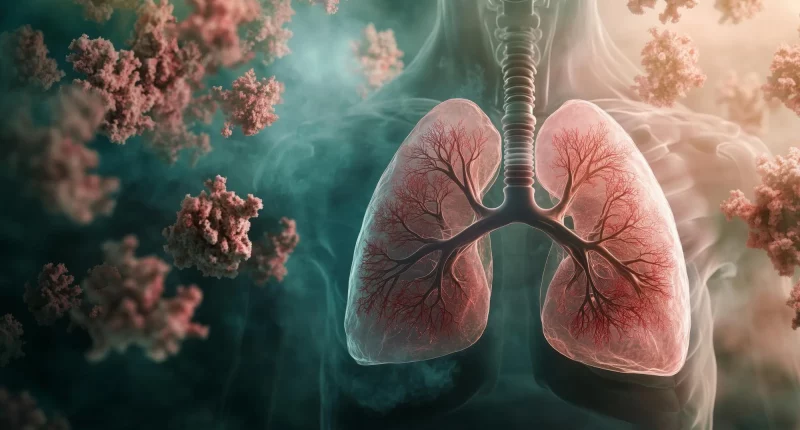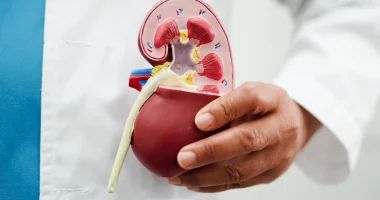COPD, or chronic obstructive pulmonary disease, is a term that encompasses two main conditions: chronic bronchitis and emphysema. People with COPD may experience one or both of these conditions, with the seriousness varying from one person to another.
Chronic bronchitis includes inflammation of the airway lining, which leads to an increase in mucus thickening and production. When bronchitis gets chronic, it resists and persists in standard treatment. On the other hand, emphysema is characterized by damage to the lung’s air sacs, leading to a loss of elasticity. This damage hampers the lungs’ ability to efficiently exchange carbon dioxide and oxygen, resulting in breathing difficulties.
Asthma indications can also be present in COPD, and having a history of asthma may heighten the chance of developing COPD. Asthma itself causes swelling of the airways, leading to spasms and heightened sensitivity to inhaled particles.
It is a lifelong condition that causes irreversible damage to the lungs, leading to progressively worsening breathing difficulties and airway blockage. As the disease advances, individuals may struggle with everyday activities like climbing stairs or cooking and may require medicines and supplemental oxygen to manage their symptoms.
In 2014, research found that COPD was the third most common reason for mortality in the USA.
Symptoms
Chronic obstructive pulmonary disease presents with a range of symptoms, which may include breathlessness, particularly after exertion, a continuous cough, over-secretion of sputum, extreme tiredness, wheezing, and progressive trouble breathing over time. These symptoms can vary in intensity, and as the condition worsens, the breathing difficulties typically become more pronounced.
In more severe cases, additional symptoms may appear, such as a bluish color to the fingernail beds or lips, breathing shortness even when talking, decreased mental alertness, and a fast heartbeat. These serious symptoms indicate a need for immediate medical attention.
In its early stages, COPD symptoms might be mild and can easily be overlooked, leading some individuals to remain unaware of their condition. Although nearly 6.4 percent of the U.S. people are diagnosed with COPD, the true prevalence could be significantly higher.
For those experiencing wheezing, there are various tips and strategies available to help manage this symptom.
Causes and Risk Factors
In the United States, smoking is a major risk factor for COPD, with up to 75 percent of individuals with the condition having smoked or currently smoking. However, smoking is not the only factor contributing to COPD. Other significant risk factors include contact with second-hand smoke, various air toxins and pollutants encountered in the workplace or at home, and a history of asthma.
Infrequently, genetic factors can play a role in COPD, such as a deficiency of the protective protein alpha-1 antitrypsin, which may contribute to the development of the disease. Additionally, having a family medical history of COPD can increase one’s risk of developing the condition.
When COPD manifests before 40 years old, it is often linked to an underlying health issue, like an alpha-1 antitrypsin deficiency. While asthma can elevate the chance of COPD due to its inflammatory effects on the airways, appropriate intervention typically helps reverse any harm caused by this condition.
Diagnosis
Diagnosing COPD involves a comprehensive approach as many conditions can cause similar symptoms, like coughing and breathing issues. In the case of COPD, these symptoms are persistent and tend to worsen over time.
To diagnose COPD, a healthcare provider begins by reviewing the patient’s family and personal medical histories, as well as their smoking history and contact with other pollutants. A physical examination is then conducted, during which the healthcare provider uses a stethoscope to hear the person’s breathing.
The diagnostic process may also include several tests. These typically involve a lung function examination, such as spirometry, which measures the amount and speed of airflow during a breath. The patient breathes forcefully into a tube connected to a spirometer, which provides readings of lung function. Additionally, an arterial blood test may be performed to measure levels of oxygen in the blood, and imaging examinations like CT scans or X-rays may be requested to provide a clearer view of the lungs.
These tests help differentiate COPD from other conditions and confirm its presence. The healthcare provider will also refer to the Global Initiative for Chronic Obstructive Lung Disease terms to evaluate the signs and assess the risk of progression.
Treatment
There is no permanent treatment for COPD, so treatment focuses on managing signs to enhance the quality of life, decrease the chance of complications, and gradual disease progression.
Smoking Cessation
Ceasing smoking is crucial for improving COPD indications and slowing its progression. It can also help prevent the onset of COPD.
Air Pollutant Avoidance
Minimizing exposure to air pollutants is important. This can be achieved by staying away from open fires, requesting others not to smoke in surroundings, steering clear of areas with paint or insect-repellent fumes, staying indoors on days with high air pollution, and using protective gear like masks in dusty environments.
Oxygen Therapy
For individuals with low blood oxygen levels, oxygen therapy may be recommended. This involves using a device, like a nasal prong, or mask, connected to an oxygen tank. This therapy can be used continuously or at specific times throughout the day.
Drug Treatments
Medicines are used to handle COPD signs and reduce complications. Inhalers are commonly prescribed and may contain bronchodilators, which relax airway muscles and ease breathing, or glucocorticoids, which reduce inflammation in the airways. Inhalers can be for short-term use to relieve symptoms during flare-ups or for long-term use to control daily symptoms.
Surgery
In certain cases, surgical options may be considered. These include lung transplants, bullectomy (removal of enlarged air sacs), lung volume reduction, and the placing of the endobronchial valves in the most damaged areas of the lung. Placement of endobronchial valves requires specialized training and equipment.
Complications
Individuals with COPD are at increased risk for several complications. Shortness of breath can lead to mobility issues, making physical activity more challenging. Additionally, individuals with COPD are more susceptible to mental health conditions like depression, which can impact overall well-being. The disease often results in fair or poor overall health and can be associated with other chronic conditions like diabetes, heart disease, or asthma. Cognitive effects such as memory loss or confusion can also occur. The impact of COPD can extend to professional life, causing a loss of income and work, and may lead to social isolation due to reduced activity and participation in social activities.
Regular follow-ups with a healthcare group are crucial for preventing or managing these complications, helping to maintain a better quality of life.
Outlook
COPD can be a serious and potentially life-threatening condition. How long someone with COPD will live depends on several factors, including whether they smoke and how severe their lung damage is.
Research from 2009 suggests that individuals who both smoke and have advanced COPD might lose about six additional years of life compared to those without COPD, on top of the four years lost due to smoking alone.
Since COPD causes permanent damage to the lungs, it’s important for individuals who smoke to quit as best as possible. Stopping smoking can significantly decrease the chance of further damage and enhance overall health.
Summary
COPD, a serious and irreversible lung condition, involves emphysema and chronic bronchitis. Key symptoms include breathlessness, persistent cough, and wheezing, with severe cases leading to cyanosis, quick heartbeat, and decreased mental alertness. Smoking is a major risk factor, significantly impacting life expectancy, with advanced COPD potentially reducing life by up to six additional years beyond the effects of smoking alone. Effective management includes quitting smoking, avoiding air pollutants, using prescribed medications, and possibly undergoing oxygen therapy or surgery. Regular medical follow-ups are essential for managing symptoms and preventing complications.









